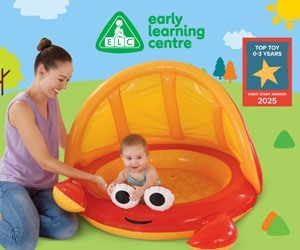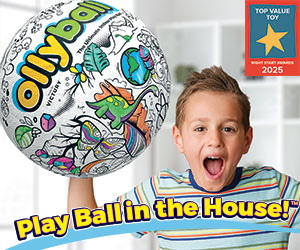MANAGING SUGAR INTAKE
We all know that sugar is bad for teeth. It combines with plaque and creates acid, which causes decay. But did you know that the amount of sugar children consume is less important than how often they consume it? Eating an entire bag of sweets after lunch is actually less damaging to teeth than eating them one by one at intervals throughout the day. A child who sucks on sherbet lemons constantly will have acid attacking the teeth all the time, while the one who gobbles them down in one sitting will have the sugar attacking for less time. That’s why dentists recommend keeping food intake to three times a day and avoiding snacking between meals.
It’s not the just the obvious sugary foods you need to watch out for. Most food has sugar in it even things like bread. So you might think you’re giving healthy snacks but when it comes to teeth they can be unhealthy. Young children usually can’t take in enough food to last until the next mealtime, so invariably they have to snack: water is fine and so is cheese, in moderation. Do the best you can and accept that you’re not going to be perfect.
Top tooth tip: Minimise sugar damage by offering a little piece of cheese after a meal. Cheese helps make saliva, which is great for washing away sugar. Brushing teeth does help, but if your child has had something very acidic, such as citrus fruit or fizzy pop, it’s best not to brush straight away because acid softens the teeth. Brush too soon after and you could actually brush away that soft tooth.
HOW TO BRUSH
Supermarket dental shelves are crammed full of brightly-coloured novelty brushes: some use alarms or flashing lights to tell a child how long to brush for, others have colour-changing bristles or electric heads. So how do you tell which kind is best for your child?
Generally, softer bristles tend to be better than medium and hard, as hard brushes can damage the tooth surface and the gum if they are used over-enthusiastically Some studies suggest that an electric toothbrush with an oscillating head could work more effectively than other toothbrushes. But apart from that, there is very little evidence that one toothbrush is better than another.’
When it comes to brushing technique, the most important issue is to get your child brushing – twice a day. There are different techniques but it’s getting young children into the routine of regular brushing that is important. Most children tend to use a scrubbing motion, simply because it’s easier. Parents often worry about how effectively they are cleaning their teeth, but they generally get there in the end.
Top tooth tip: Use disclosing tablets to show older children the bits of their teeth that they’re missing. These coloured tablets show up areas of plaque when chewed and can be a real motivator. Once they’ve identified the areas, encourage them to modify their technique to include them.’
TOOTHPASTE ON TRIAL
Most children fall between two extremes – those who would happily
munch a whole tube of toothpaste as a snack (we don’t recommend this, by
the way!), and those who are very picky when it comes to flavours or
colours. Luckily for the latter, there are plenty of child-friendly
brands out there, and there’s not much to choose between them, except it
is sensible to choose a brand which contains fluoride because it helps prevent decay. Small children find it hard to use
mouthwash properly and there’s no need to use it at this stage if they
are brushing regularly with fluoride toothpaste.
Top tooth tip: If your kids do use a mouthwash, it’s
better to use it at a different time to brushing. If you’re brushing in
the morning and evening, use a mouthwash after lunch. That means you’re
getting the extra fluoride benefit in terms of number of applications.
BAD BREATH
This is often due to gum inflammation or decay. If you’re worried
about your child’s breath, the dentist should be your first stop. If
decay is ruled out, another cause might be reflux. If you suspect that
might be the case, take your child to see the GP.
Interestingly, bad breath can be a phantom condition – people often
think they have it when they don’t! If you can’t decide whether your
child’s breath is a bit smelly, ask a trusted friend for their opinion.
Top tooth tip: The bugs that cause bad breath are
often on the top surface of the tongue and you can brush the tongue to
help get rid of them. Children might need to build up a tolerance to it
by brushing gently at first, as many people can’t tolerate brushing
their tongue straight away.
GREAT GUMS
Gums in tip-top condition are the foundation of good dental health.
It’s simple to keep them healthy by getting kids to brush well and
regularly. But if things slip, the signs of gum problems are easy to
spot. Look out for bleeding and puffiness, or if the gum looks very
smooth and glossy, or red and raw. Children who breathe through their
mouths, particularly at night, can be more prone to gum disease, as this
can dry out the gums at the front of the mouth.
If gums aren’t healthy, it’s likely that your child’s brushing
technique or diet needs an overhaul. Keep sugar frequency down and help
to develop good brushing habits. Build the right habits from an early
age and the chances of your child developing any problems are small.
Top tooth tip: Get kids using dental floss as soon
as possible to keep gums healthy. Flossing is great for removing bits of
plaque and food between the teeth where brushing can’t reach, and where
bacteria can build up.
PAIN IN THE MOUTH!
Mouth health isn’t just about teeth. There’s a host of other mouth nasties that can take up residence.
- Dry lips are a common problem for young children, particularly
in the winter, so use lip balm on the top lip and try to break the habit
if your child is a lip-licker.
- The same goes for cold sores.
Once they’re established, there’s not much you can do to combat them
apart from using over-the-counter remedies.
- Mouth ulcers can
also be a real pain for kids. But unless they’re popping up regularly,
there’s no need to worry. If children suffer from mouth ulcers
frequently, take them to the dentist for a check-up.












